Step into the vibrant world of Georgian cuisine with this Georgian satsivi recipe, a dish that's as rich in history as it is delicious.
Hailing from the Caucasus region, Satsivi is a beloved staple that's found its way into the hearts of culinary adventurers and low-carb enthusiasts alike. This authentic recipe will not only introduce you to the exotic tastes of Georgia but also provide a satisfying, keto-friendly meal that's perfect for a cozy night in or a celebratory feast.
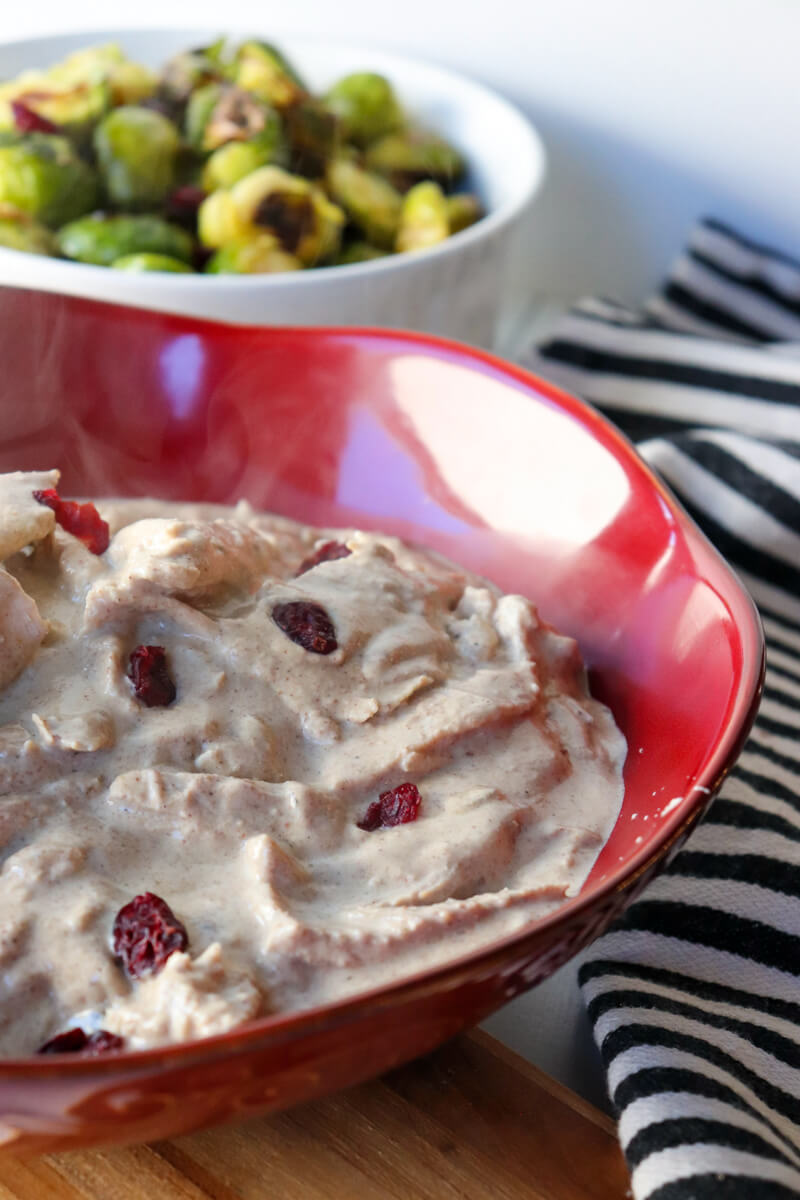
Let's unravel the secrets of Georgian Satsivi and discover why it's a must-try for every foodie and home cook.
🌰 What is Georgian Satsivi Walnut Sauce?
Chicken in walnut sauce, also known as chicken satsivi, is a traditional Georgian dish made with poultry (usually turkey or chicken) and a rich walnut sauce. The name "Satsivi" actually refers to the walnut sauce itself, which is used in various Georgian dishes. It's known for its creamy texture and unique blend of spices, making it a delightful addition to any meal.
👩 My Personal Experience with Satsivi
When I lived in Georgia as a Peace Corps volunteer, I fell in love with Satsivi. Every time I was lucky enough to be served this dish, it was an adventure for my taste buds. I absolutely love the traditional blend of spices that just screams "Georgian!".
My host family took immense pride in preparing satsivi, and their enthusiasm was infectious. Each meal in Georgia isn't just food; it's a supra - a beautiful tapestry of Georgian culture, love, and hospitality that I cherish deeply.
Today, Georgian Satsivi has become our family's traditional New Year's dish, featuring a deliciously roasted turkey. The rich walnut sauce and aromatic spices perfectly complement the tender meat, making it a festive favorite everyone eagerly anticipates.

❤️ Why You'll Love Satsivi
- Flavorful and Exotic Experience the unique flavors of Georgian cuisine with a dish that's sure to impress.
- Low Carb and Keto Friendly Perfect for those following a low-carb or keto diet without compromising on taste.
- Versatile Pairings Enjoy Satsivi on its own or with steamed cauliflower rice or other sides for a complete meal.
- Cultural Exploration Delve into the rich history and culinary traditions of Georgia from the comfort of your own kitchen.
🍽 Essential Kitchen Equipment for Making Satsivi
Cooking Satsivi at home doesn't require a culinary arts degree, but having the right tools can make the process a breeze. Here's a list of must-have kitchen equipment, seasoned with a bit of friendly advice to ensure your Satsivi turns out perfectly every time.
Food Processor or Blender
You'll need a food processor or blender to achieve that silky smooth walnut sauce that Satsivi is famous for. Trust me, investing in a good quality one will save you a ton of time and effort. If you don't have one already, put it on your kitchen wish list. It's a game-changer!
Cutting Board and Sharp Knife
A reliable cutting board and a sharp knife are essentials in any kitchen, and you'll be using them a lot here. From chopping onions to finely slicing garlic, these tools are your best friends. Opt for a sturdy wooden or plastic cutting board and keep that knife sharp-dull knives are a nightmare and can really put a damper on your cooking excitement.
Large Mixing Bowls
You're going to need a couple of large mixing bowls to handle the marinated poultry and to mix the walnut sauce. Having multiple bowls on hand means you can prep everything efficiently without making a huge mess. Go for bowls that are big enough to mix freely without spilling ingredients all over your countertop.
Heavy-bottomed Pot
A heavy-bottomed pot is perfect for sautéing the onions and simmering the poultry. This ensures even cooking and helps to prevent your ingredients from sticking or burning. If you don't already have one, a Dutch oven works wonders and is super versatile for other recipes too!
Wooden Spoon or Spatula
You'll need this to stir your onions to golden perfection and mix in your walnut sauce later on. I swear by wooden spoons; they don't scratch your pans and just feel so classic and comforting in your hand. Plus, they're perfect for deglazing!
Mortar and Pestle (Optional but Fun)
While not absolutely necessary, using a mortar and pestle to grind spices can be a fun way to connect with traditional methods and really engage with the process. It's like bringing a piece of Georgian culinary tradition right into your kitchen. Plus, freshly ground spices always have that extra depth of flavor!
Equipping your kitchen with these essentials will set you up for Satsivi success and make the cooking experience both enjoyable and efficient.
🥘 Ingredients with Tips and Tricks for the Best Satsivi Ever
2 lbs of Roast Turkey or Chicken (Thighs or Breasts)
Look for skinless and boneless cuts to save you prep time. Skinless chicken thighs are ideal for dishes like Katmis Satsivi, where the chicken is seasoned, browned, and then cooked with a walnut sauce until tender. Thighs are usually juicier, but breasts work great too if you prefer leaner meat. If you can find free-range or organic poultry, go for it - the taste is worth it! I also like to roast a whole turkey to use when they're on sale around holidays.
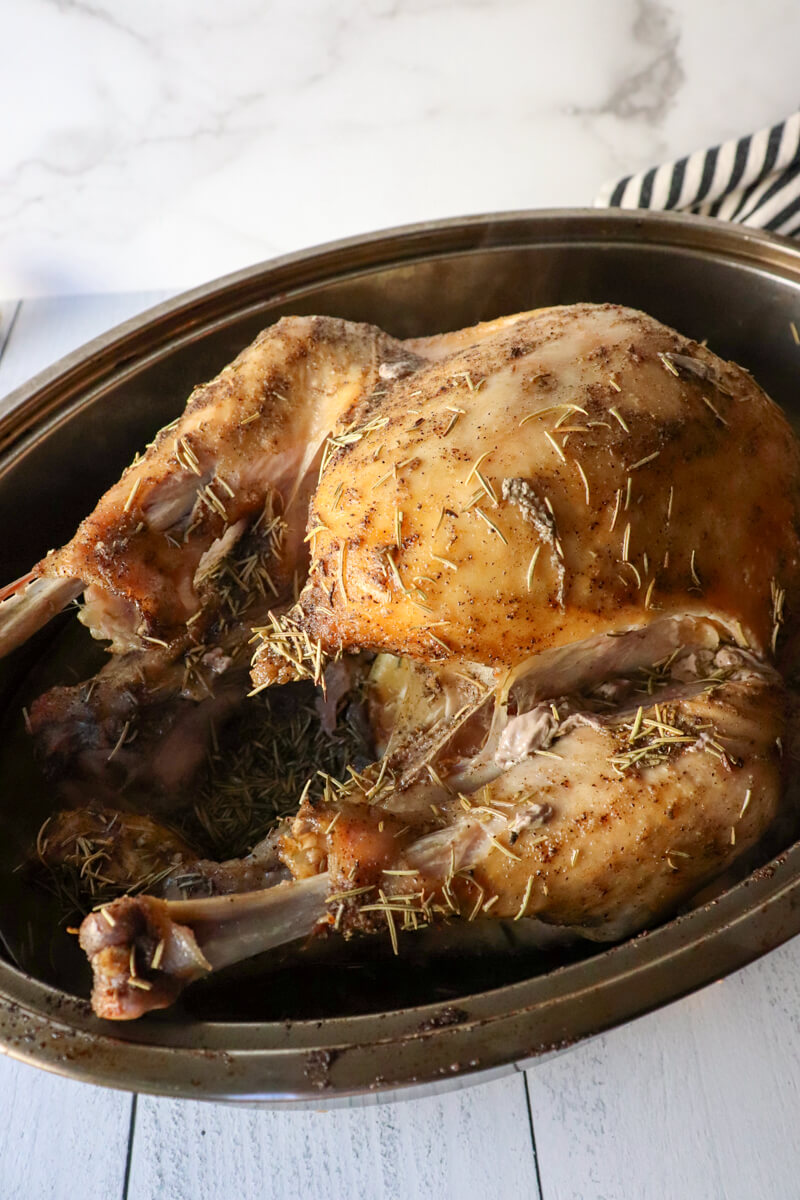
1 Large Onion, Finely Chopped
A good onion makes all the difference! Go for fresh, firm onions. A sharper knife makes chopping easier and safer, so keep those blades in top shape.
4 Cloves of Garlic, Minced
Fresh garlic cloves will give you the best flavor punch. Feel free to add an extra clove or two if you're a garlic lover. Honestly, is there such a thing as too much garlic?
Once the initial garlic is cooked, add the remaining garlic along with other ingredients and cook until golden to enhance the overall flavor of the dish.
1 Cup Walnuts, Finely Ground (or Almonds)
Use fresh, unsalted walnuts for the best results. Give them a quick toast in the oven before grinding to elevate their nutty flavor. Just be careful not to burn them! Garnish the serving bowls with chopped walnuts to add texture and flavor to the presentation.
Alternative option: I often use almonds instead of walnuts as my daughter has a severe walnut allergy. It's a great substitute and still yields delicious Satsivi.
2 tablespoon White Vinegar
This gives a little tang to balance out the dish. Any good quality white vinegar will do, but if you're feeling adventurous, you can experiment with apple cider vinegar for a slight twist.
1 Cup Water (or Chicken Bone Broth)
Not much to say about water, but make sure it's clean! Filtered water is preferable if your tap water isn't the best. You can also use chicken stock or bone broth if you have it on hand.
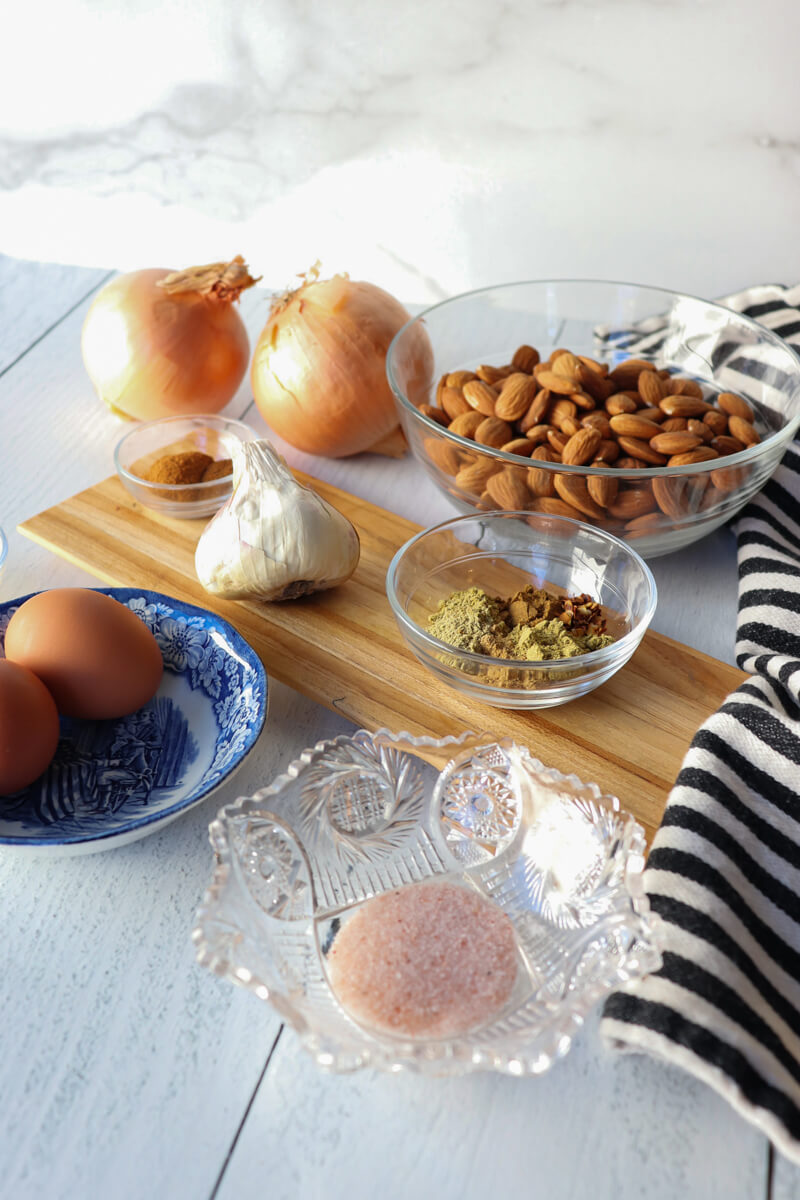
1 teaspoon Ground Coriander
Ground coriander adds a lovely citrusy note. Try to use freshly ground coriander seeds if you can - the flavor is unbeatable.
1 teaspoon Ground Fenugreek
Fenugreek has a unique, slightly sweet flavor. If whole seeds are more accessible, grind them yourself in a pestle and mortar for maximum freshness. Trust me, it makes a difference.
½ teaspoon Ground Marigold (Optional)
This one's a bit of a wildcard and can be tricky to find. It's used a lot in Georgian cuisine and adds traditional flavor, but is also for color, so if you can't get ahold of it, your Satsivi will still be delicious.
1 teaspoon Cinnamon and ½ teaspoon Cloves (Optional but Suggested)
These are a personal touch I like to add for a warm, cozy flavor. Not all Georgians use cinnamon and cloves, but it adds to the flavor especially around the holidays.
Salt and Black Pepper to Taste
Seasoning is everything! Use finely chopped kosher salt and freshly ground black pepper if possible. Taste and adjust as you go - you know your preferences best.
Fresh Cilantro or Parsley for Garnish
Fresh herbs add a pop of color and freshness. Go for bright, perky leaves and avoid anything limp. Either cilantro or parsley works, so use whichever you love more!
Pomegranate Seeds for a Burst of Freshness (Optional)
If you're feeling fancy or have some extra pomegranate seeds on hand, sprinkle them over your Satsivi right before serving. It adds a lovely tang and color contrast to the dish. Pomegranate seeds are traditional in Georgian cooking and add a special touch to the overall experience. Plus, they're packed with antioxidants and nutrients - win-win!
You'll notice in my pictures I used dried cranberries as I didn't have any pomegranate seeds available at the time. They are a delicious option as well to add a pop of color.
With these ingredients prepped and ready, you're all set to dive into the world of Satsivi.
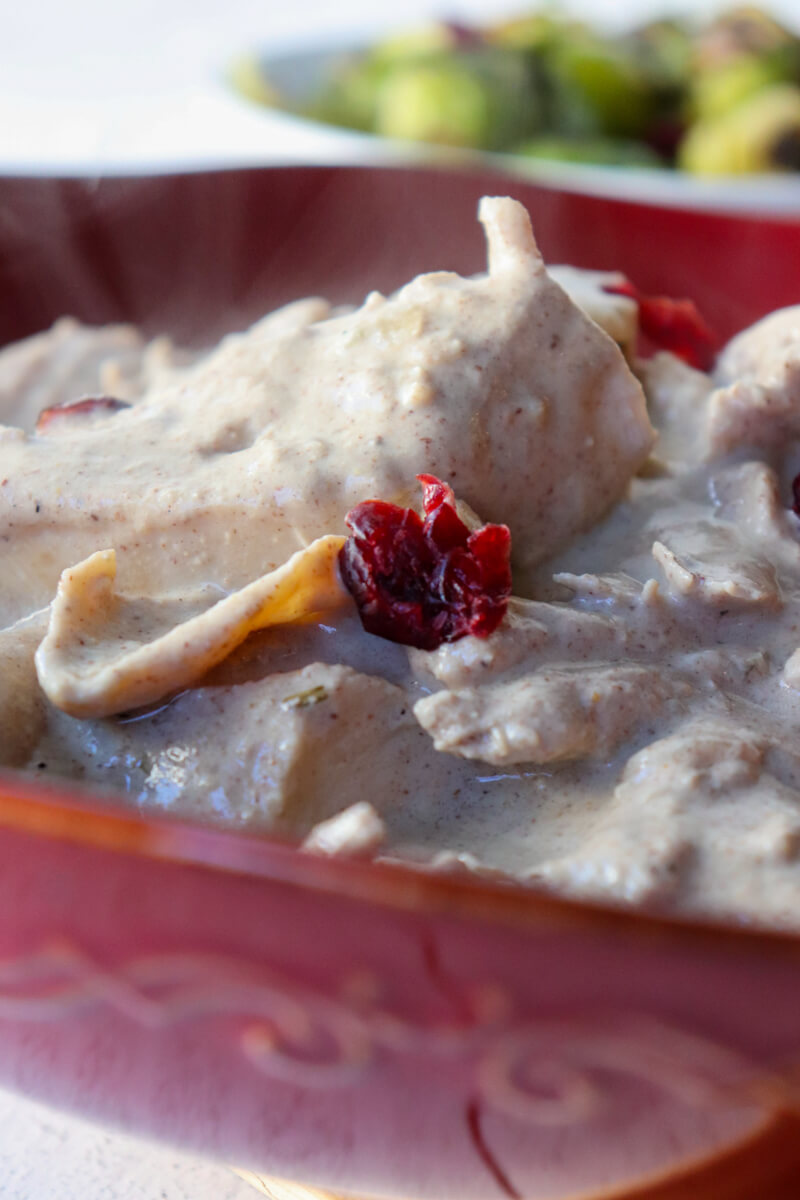
🔪 Cooking Instructions
Follow these simple steps to create a mouth-watering Satsivi:
To make Georgian Satsivi, start by seasoning your chicken (or turkey) with salt and pepper. Place it in a large pot and add enough water and chicken stock to cover it. Bring it to a boil over medium heat, then reduce the heat and let it simmer, partially covered, for about 25 minutes until the chicken is fully cooked and tender. Once done, remove the chicken and let it cool. After it cools, shred it into bite-sized pieces.

*Note: If you're short on time or prefer modern kitchen gadgets, cook your turkey or chicken in a pressure cooker! Place the bird or pieces with chopped onion, minced garlic, and 1.5 cups of water. Seal the lid, set to high pressure, and cook for 20-25 minutes for chicken, or 30-35 minutes for turkey. Let the pressure release naturally for 10 minutes before opening.
Alternatively, roast at 375°F (190°C) until the internal temperature is 165°F (75°C), usually 1.5-2 hours. Cool before shredding.
🥣 Make the satsivi walnut sauce
Next, grind the toasted walnuts in a food processor until they form a fine, sticky paste, which might take up to 5 minutes.
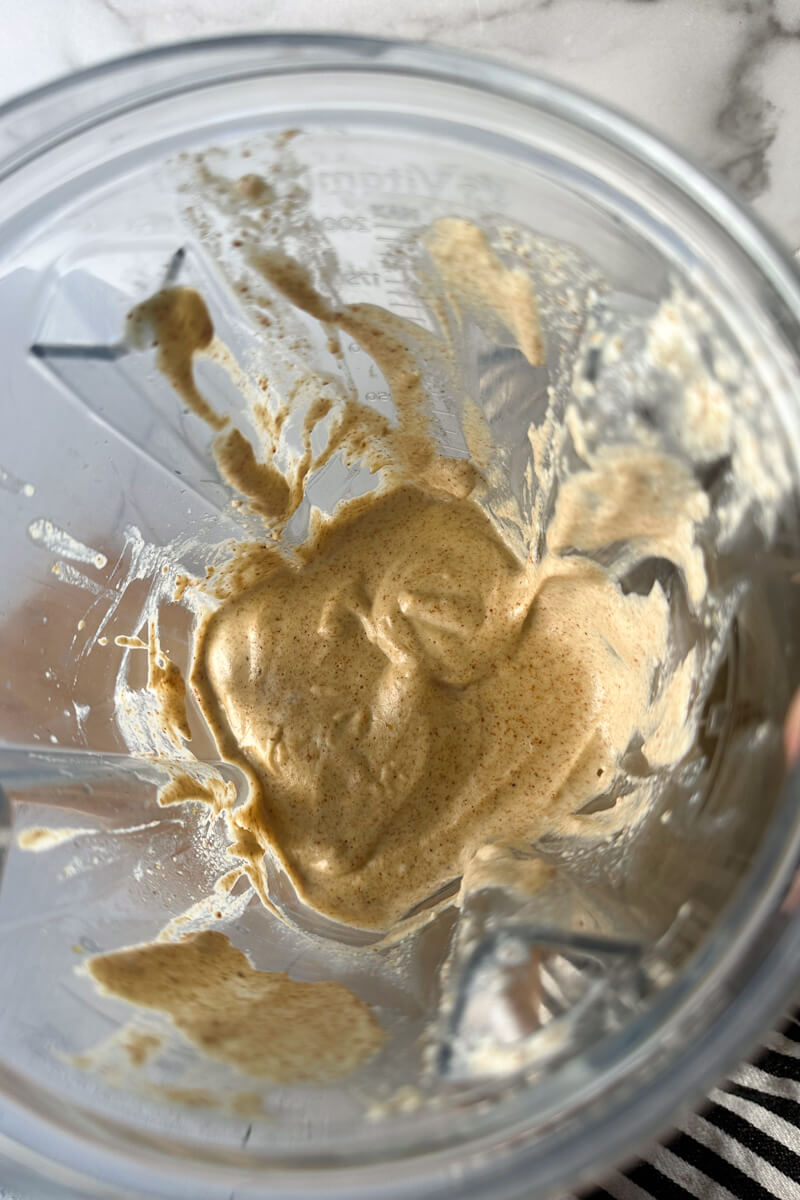
Now, combine this walnut paste with minced garlic, white vinegar, ground coriander, ground fenugreek, marigold, cinnamon, cloves, and a pinch of salt and pepper in the processor.
Gradually add water (or chicken stock or bone broth) while processing until the mixture becomes a smooth, thick sauce. Make sure to scrape down the sides to ensure everything is well-blended.
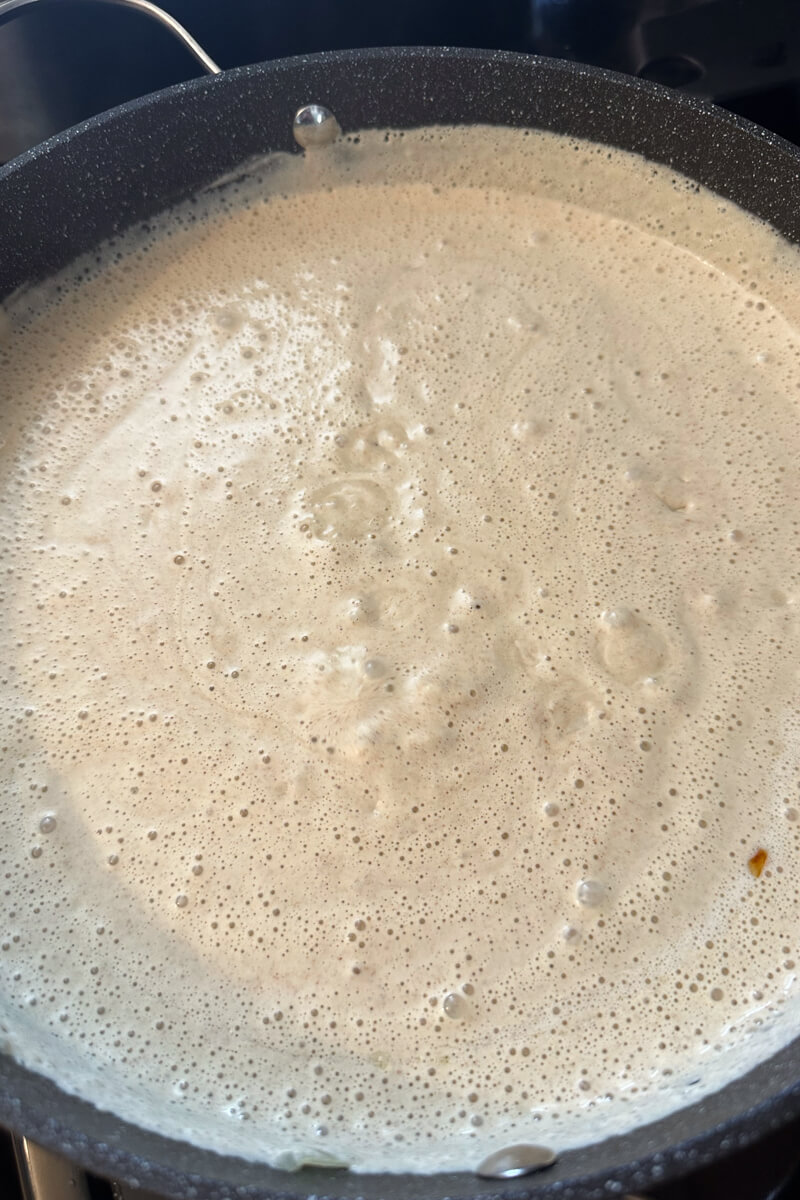
Drizzle some olive oil onto a frying pan, and heat to medium high. Add the chopped onion and cook for 3-4 minutes, until transluscent but not burnt.
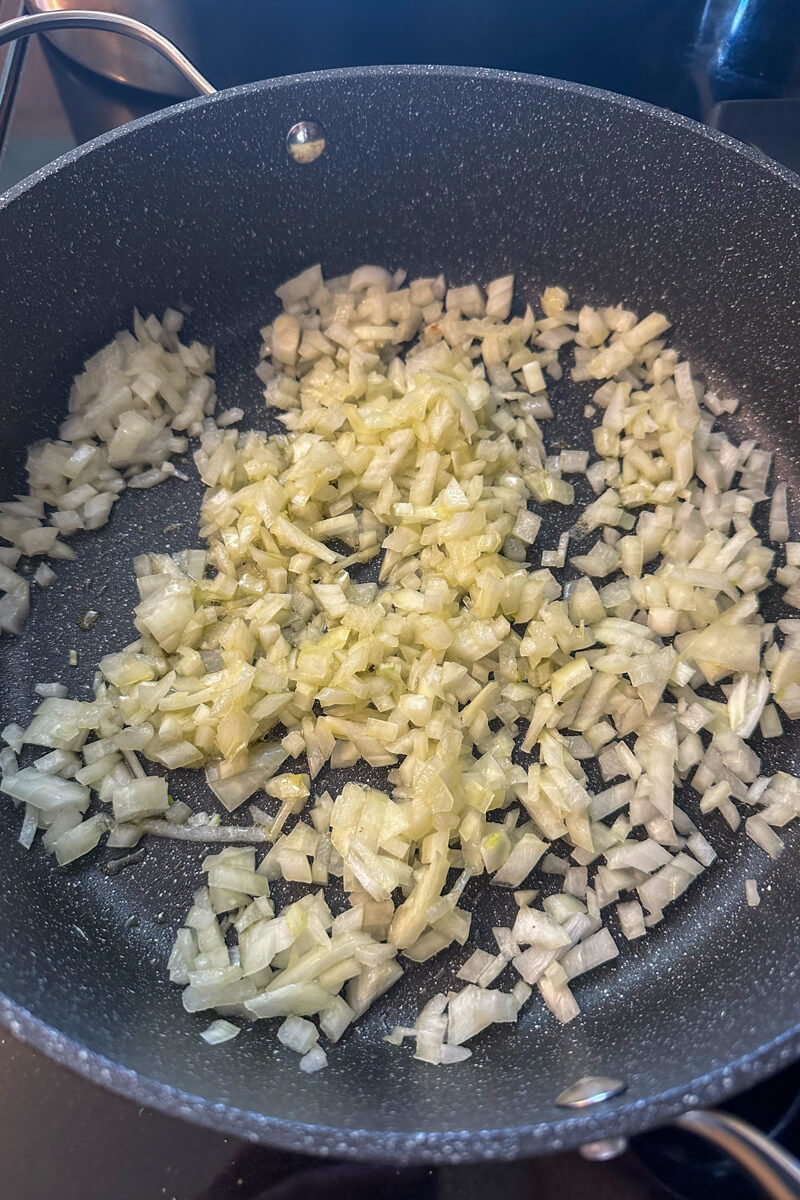
Slowly add the walnut sauce back into the pot with the shredded chicken, and add the onions, stirring constantly to avoid lumps. Cook on low heat for another 10-15 minutes.

Stir occasionally until the sauce thickens slightly. Finally, adjust the seasoning to taste with salt and pepper, and serve your Satsivi warm, garnished with fresh cilantro, parsley, and/or pomegranate seeds. Enjoy!
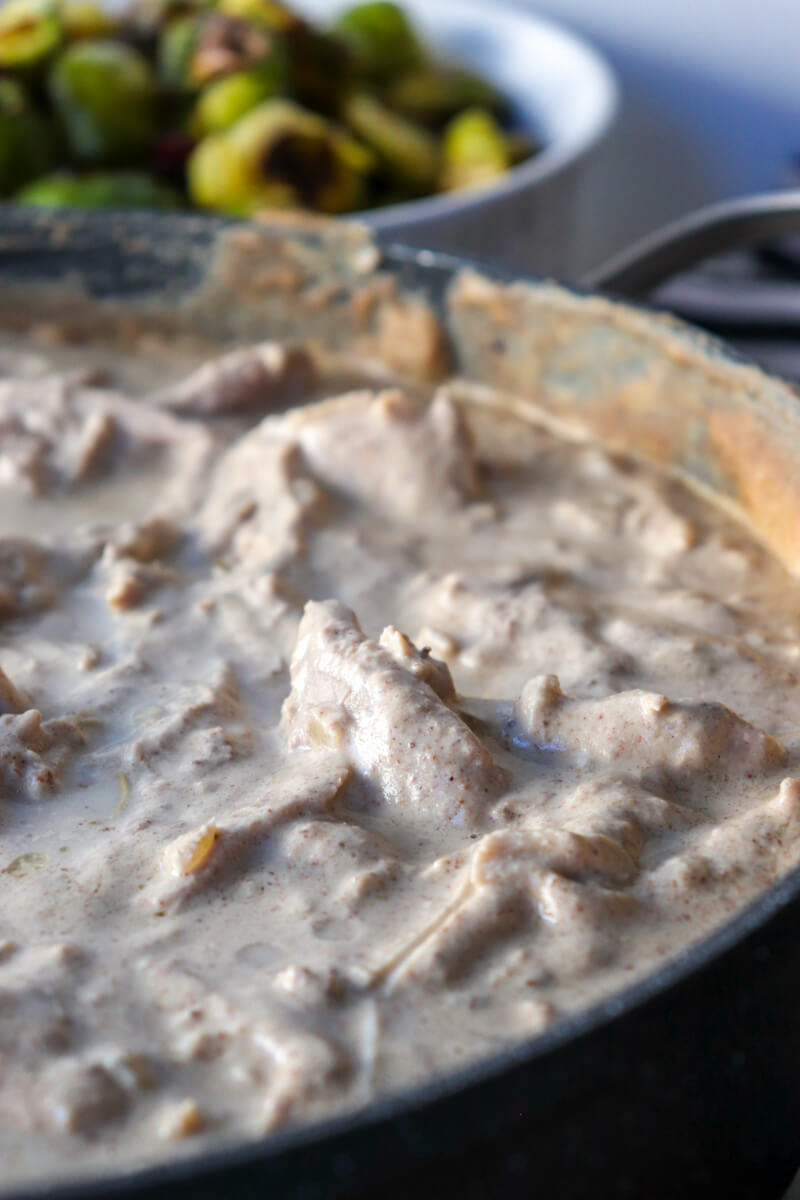
🍛 Serving Suggestions for Georgian Chicken in Walnut Sauce
Now that you've cooked up your delectable Satsivi, it's time to think about how to best serve it to impress your family and friends. Here are some tasty and thoughtful serving suggestions and pairings to elevate your Satsivi experience:
- Over Steamed Cauliflower Rice:
For a lighter, low-carb option, serve your Satsivi over steamed cauliflower rice. The nuttiness of the cauliflower complements the rich walnut sauce perfectly. Garnish with chopped walnuts and the remaining cilantro for added flavor.
- With Traditional Georgian Bread (for those not worried about making it low carb):
Tonis puri, aka Georgian bread, is the perfect accompaniment to Satsivi. The slightly sour taste and soft texture of this traditional bread provide a great balance to the rich flavors of your dish.
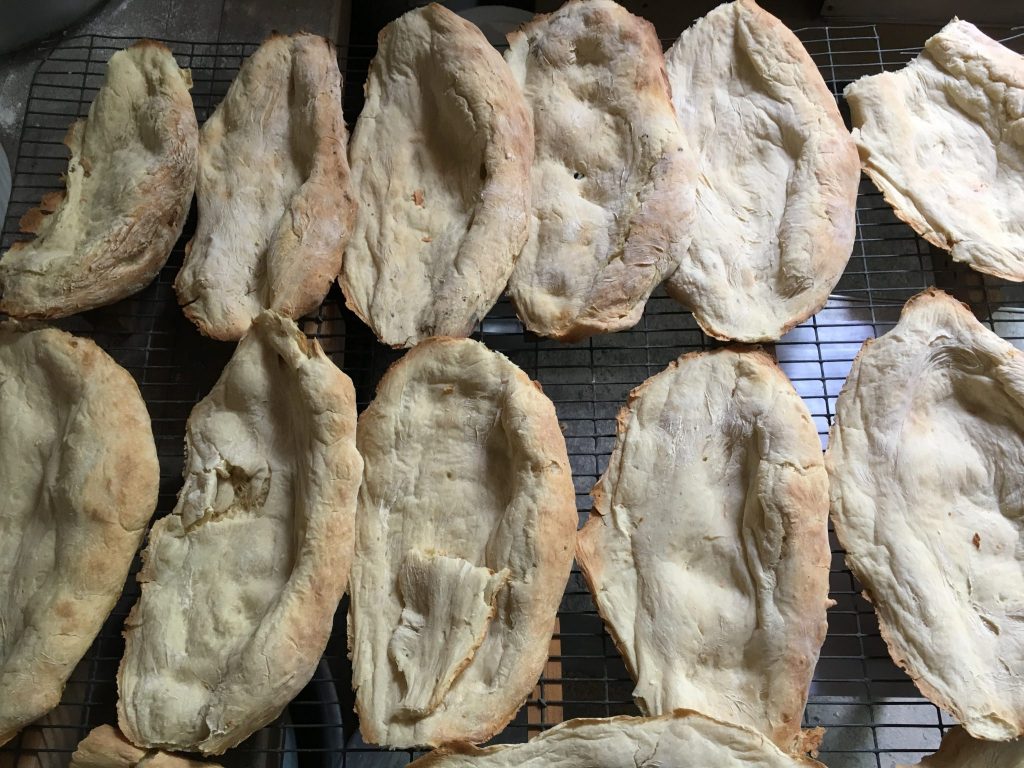
Mchadi, a Georgian cornmeal bread, is perfect for soaking up every drop of the delicious walnut sauce. Serve it warm and enjoy the authentic combination.
- Alongside Fresh Greens:
A crunchy salad with a citrus vinaigrette can provide a refreshing contrast to the hearty Satsivi. Try using mixed greens, thinly sliced radishes, and pomegranate seeds for added texture and flavor.
- Wine:
Georgian cuisine boasts some of the oldest wine traditions, so pairing your Satsivi with a bottle of Georgian wine is a must. A crisp white wine like a Rkatsiteli or a robust red like a Saperavi will complement the dish's flavors beautifully.
- Pickled Vegetables:
Serve a side of pickled vegetables like cucumbers or green tomatoes. The tanginess of the pickles will nicely balance the rich, creamy walnut sauce.
- Grains and Starches:
If you're looking for something heartier, serve the Satsivi with other grains like quinoa, bulgur, or even a simple garlic butter rice. These options will soak up the flavors and add a satisfying base to the meal.
With these serving suggestions and pairings, you're all set to savor every bite of your homemade Satsivi. Enjoy the delightful journey of flavors and the joy of sharing this traditional Georgian dish with loved ones!
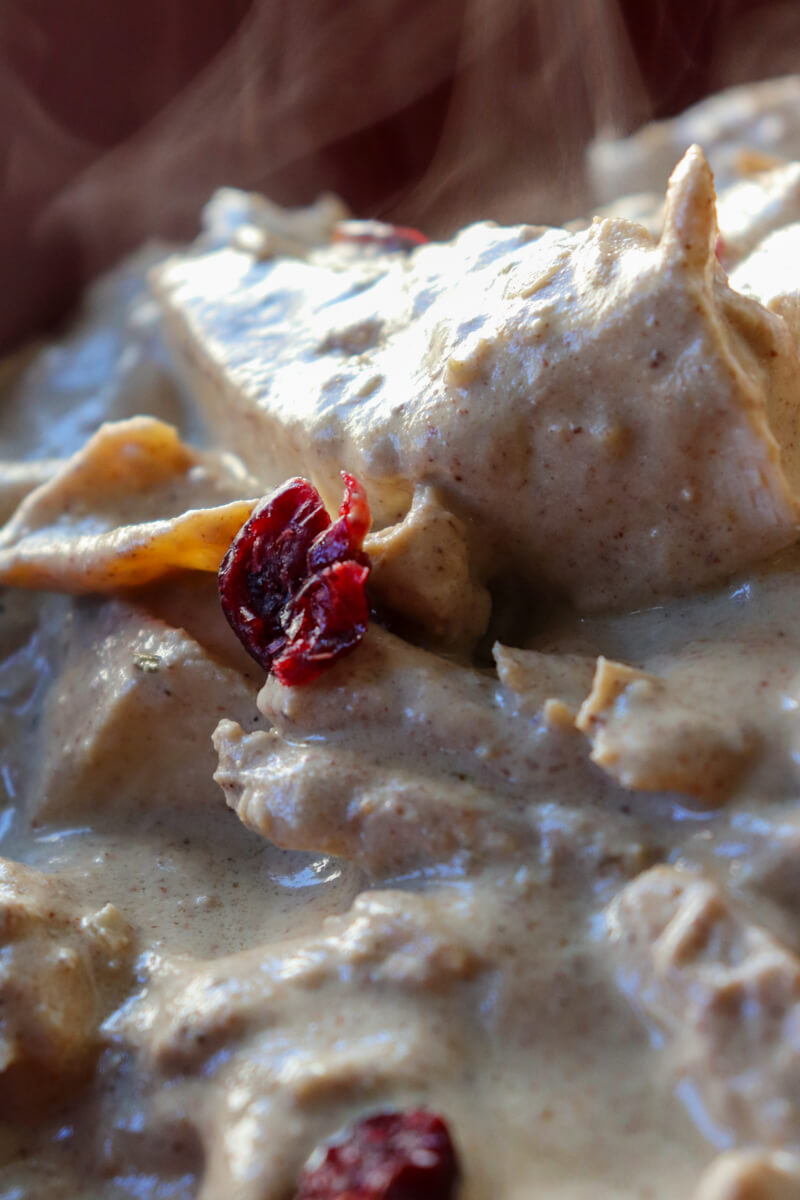
👩🍳 Let's eat!
As you savor the last bites of your homemade Georgian Satsivi, take a moment to appreciate the journey through history, flavors, and the warmth of the Caucasus region it has brought to your table. Whether you've prepared this dish to add a touch of adventure to your culinary repertoire or as a satisfying, health-conscious meal, we hope it has left you with a taste of Georgia that you'll want to revisit time and again.
👉 Want to plan a trip to Georgia and try satsivi in it's birthplace? Check out these useful links:
- Cheap Flights: Score great deals on airfare.
- Accommodation Savings: Find affordable stays from hostels to luxury hotels.
- Budget Car Rentals: Get great rates on car rentals.
- Travel Adapter: All-in-one adapter for hassle-free charging.
This post contains affiliate links for your convenience. Click here to read my full disclosure policy.
Ready to plan your perfect trip? Let's do it! 🌍✈️

Share your Satsivi experience with me and the world by tagging @explorermomma on social media. And remember, the exploration of Georgian cuisine doesn't have to stop here. Stay tuned for more delicious recipes and culinary adventures!
🇬🇪 More Georgian Recipes
Keto Cabbage Rolls: Georgian Stuffed Cabbage
Georgian Foods: Eggplant with Walnuts
Keto Khachapuri: Imeruli Style Cheese Bread
Keto Mushroom Recipes: Georgian Stuffed Mushrooms
Happy cooking! 🍽️
📌 Pin the keto recipe here:

🖨 Printable recipe card
📖 Recipe

Georgian Satsivi Recipe
Indulge in the rich flavors of Georgian Satsivi, featuring tender chicken (or turkey!) bathed in a rich, aromatic walnut sauce. This traditional dish brings a taste of Georgia’s culinary heritage to your table, perfect for any festive occasion.
Ingredients
- 2 lbs of turkey or chicken (thighs or breasts)
- 1 large onion, finely chopped
- 4 cloves of garlic, minced
- 1 cup walnuts, finely ground
- 1 tablespoon white vinegar
- 1 cup water (or chicken bone broth - more or less for desired consistency)
- 1 teaspoon ground coriander
- 1 teaspoon ground fenugreek
- 1 teaspoon ground marigold (optional)
- 1 teaspoon cinnamon
- ½ teaspoon ground cloves
- Salt and black pepper to taste
- Fresh cilantro or parsley for garnish
- Pomegranate seeds for garnish (optional)
Instructions
- Prepare the Chicken Season chicken (or turkey) with salt and pepper. In a large pot, place the chicken or turkey. Add water and chicken stock just enough to cover the chicken.
- Cook the Chicken Bring to a boil over medium heat. Reduce heat to low and simmer, partially covered, for about 25 minutes or until the chicken is fully cooked and tender.
- Shred the Turkey or Chicken Remove the chicken from the pot and allow it to cool. Once cooled, shred the chicken into bite-sized pieces and set aside.
- Cook the Onions Warm a tablespoon of olive oil in a pan or skillet. Add the chopped onions and cook for 3-4 minutes until translucent but not burnt.
- Grind the Walnuts To make things easier, you can use a food processor to grind the walnuts. Add the toasted walnuts, then pulse until they reach a fine paste, sticky and smooth and not grainy. This could take up to 5 minutes.
- Make the Nut Sauce Next, combine the finely ground walnuts with the minced garlic, white vinegar, ground coriander, ground fenugreek, marigold, cinnamon, and cloves, and a pinch of salt and pepper in the processor. Gradually add the water (or chicken stock or bone broth) while processing until the mixture transforms into a smooth, thick sauce. Add more or less water as needed for your desired consistency. Pause to scrape down the sides if needed to ensure everything is well-blended and evenly mixed. Your sauce is now ready to bring a rich, nutty flavor to your Satsivi!
- Combine and Cook Slowly add the reserved walnut sauce back into the pot with the chicken, and add the onions, stirring constantly to avoid lumps. Cook on low heat for another 10-15 minutes, stirring occasionally, until the walnut garlic sauce thickens slightly.
- Final Touches Adjust seasoning to taste with salt and pepper. Serve the Satsivi warm, garnished with fresh cilantro, parsley, and/or pomegranate seeds.
Notes
Note: If you're short on time or prefer modern kitchen gadgets, cook your turkey or chicken in a pressure cooker! Place the bird or pieces with chopped onion, minced garlic, and 1.5 cups of water. Seal the lid, set to high pressure, and cook for 20-25 minutes for chicken, or 30-35 minutes for turkey. Let the pressure release naturally for 10 minutes before opening.
Alternatively, roast at 375°F (190°C) until the internal temperature is 165°F (75°C), usually 1.5-2 hours. Cool before shredding.
Nutrition Information:
Yield: 8 Serving Size: ⅛ of recipeAmount Per Serving: Calories: 267Total Fat: 11gCarbohydrates: 5gNet Carbohydrates: 3gFiber: 2gProtein: 37g
*Nutrition Facts per MyFitnessPal dot com. For the most accurate facts, calculate your own with the exact ingredients you use in the recipe.
Nutrition Disclaimer
Please be aware I am not a medical specialist or nutritional professional. On this blog, I share recipes and what works for me. Please do not take anything on this blog as medical advice and always consult with your doctor before starting any diet or exercise program.
I use MyFitnessPal dot com to calculate nutrition facts as a courtesy to my readers, and I remove erythritol from the final carb count and net carb count because it does not affect my own blood glucose levels.
This is as accurate as possible, but it's best to independently calculate nutritional data on your own with the specific ingredients you use. I expressly disclaim any and all liability of any kind with respect to any act or omission wholly or in part in reliance on anything contained in this website.


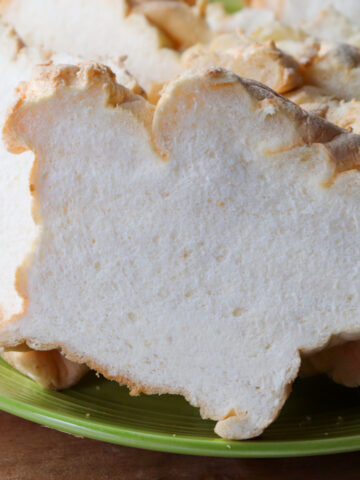

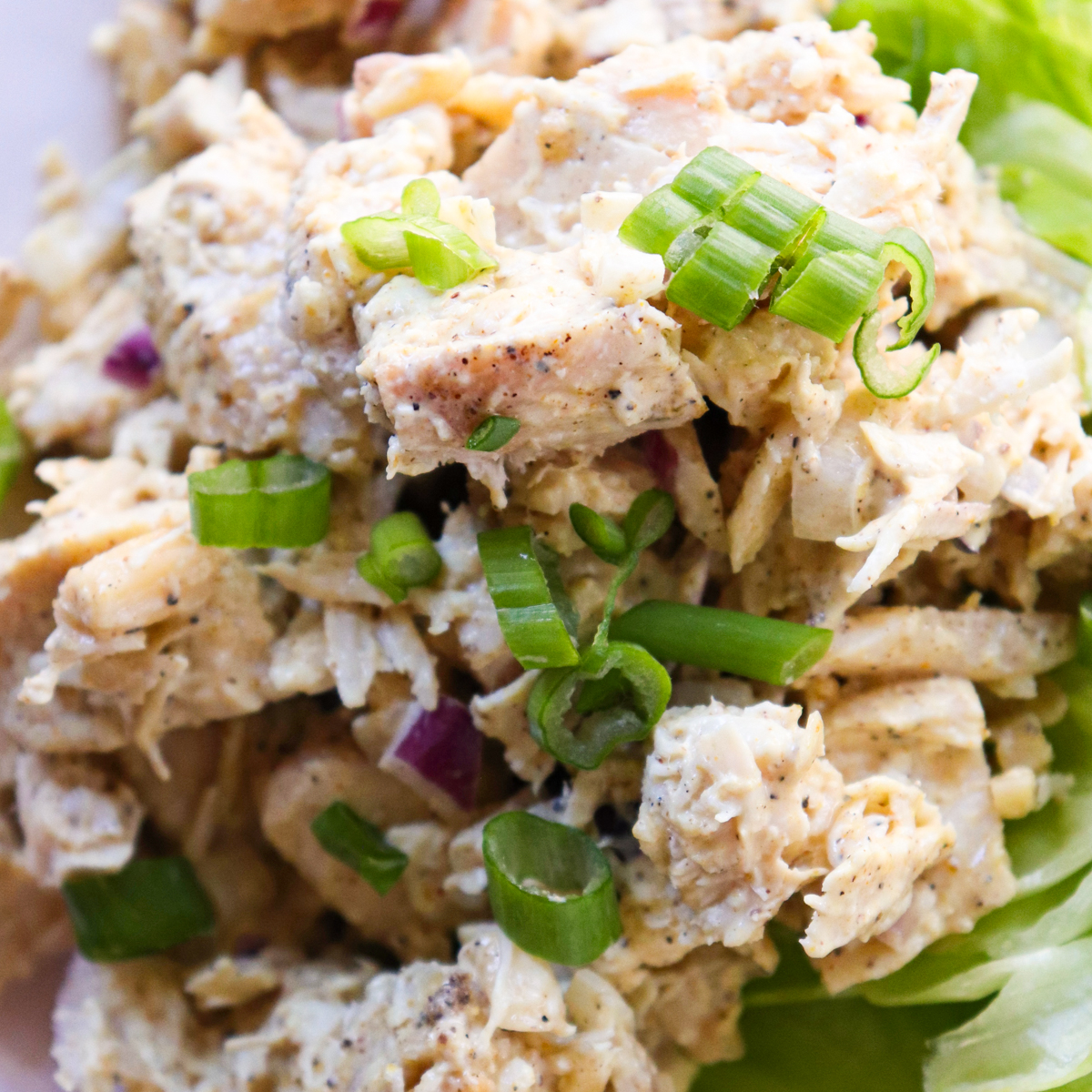
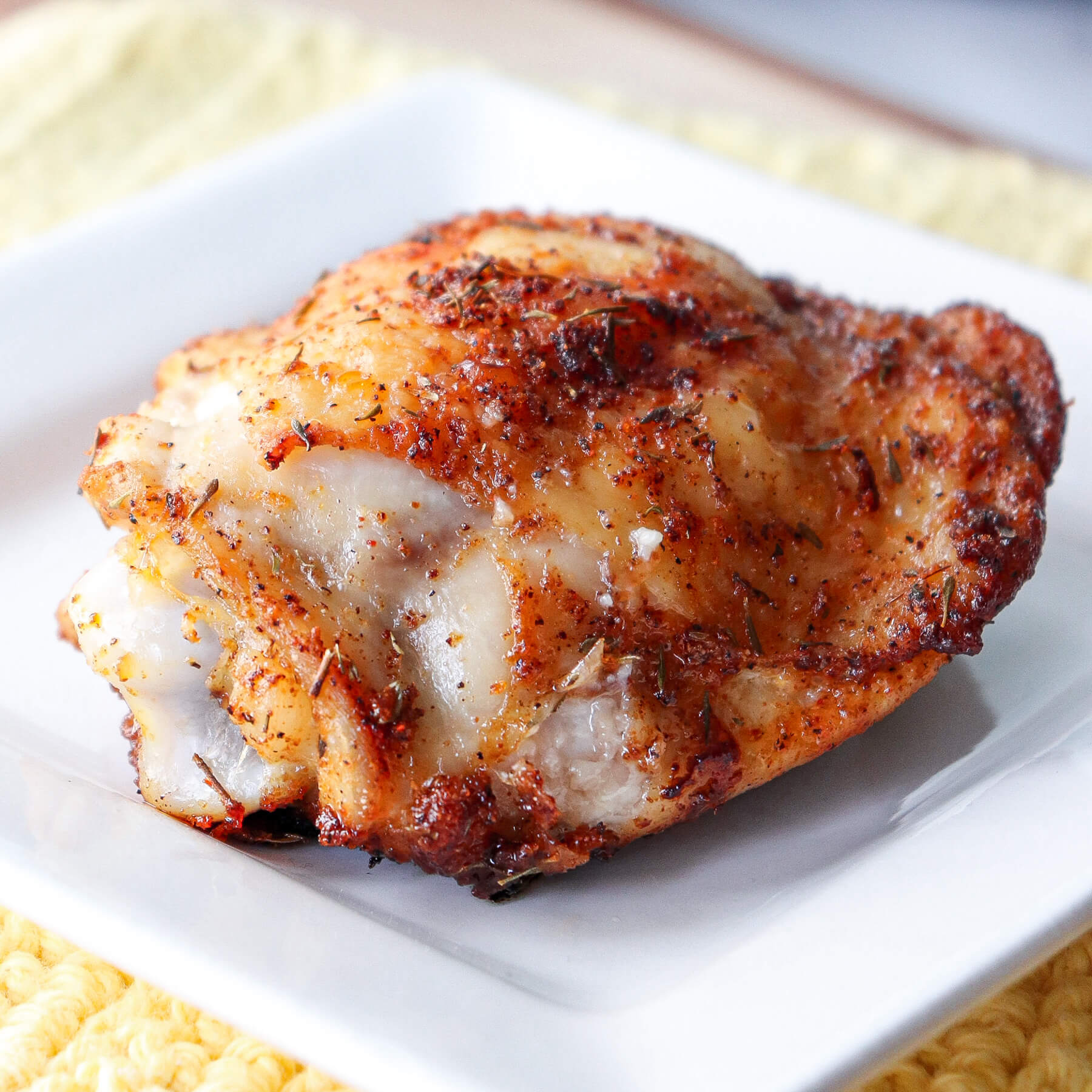
Leave a Reply